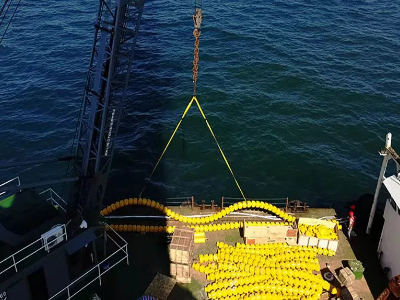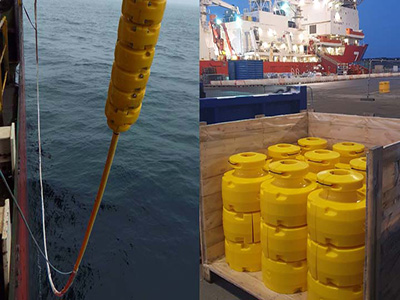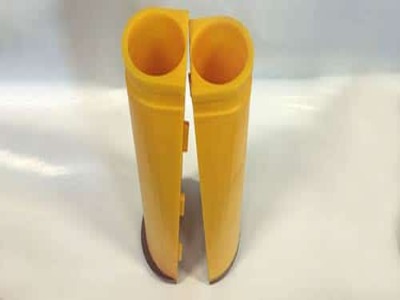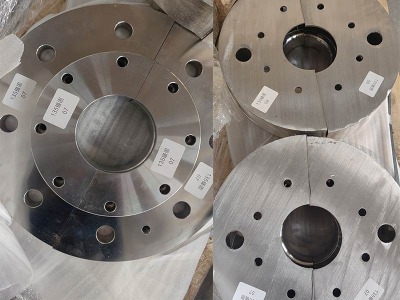Bending restrictors are mainly used to protect submarine cables or flexible pipes from excessive bending. They are mainly used in J-tube outlets, cable landing points, platform connections in submarine cable laying, dynamic risers in offshore wind farms, flexible risers in submarine oil and gas fields, submarine umbilical cables, and other marine projects.
During the installation or operation phase of marine engineering, when the flexible pipe generates static loads, a bend limiter is required to prevent excessive bending and buckling. The bend limiter consists of two polyurethane half shells, which are usually fixed with bolts and nuts to fix the cable inside to protect the cable.
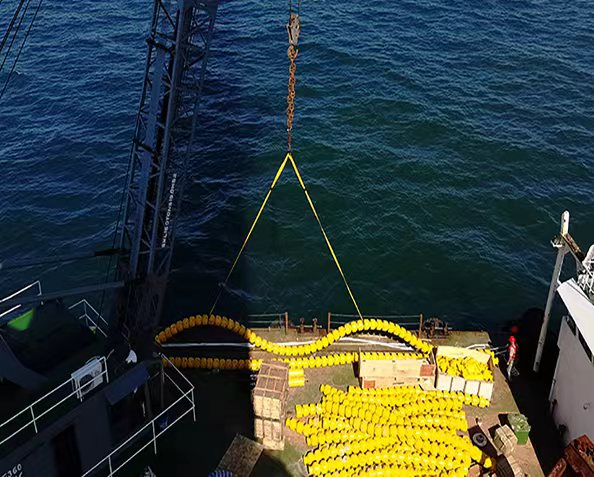
Main features
● Split design allows the bend restrictor to be installed after pipeline termination
● Easy to install onshore and offshore
● Polyurethane has low density and light weight in water, reducing pipeline burden
● Polyurethane is wear-resistant and tear-resistant, with a normal service life of 25 years
Material specifications
Material name: ether-based polyurethane
Hardness: 70A--85D(customizable)
Specific gravity: 1.04---1.60
Bend limiter application scenarios
In marine engineering, bending limiters (also known as bend restrictors) are widely used to protect flexible components, such as subsea cables, umbilicals, and flowlines. Their main applications include:
Offshore wind power
Protecting export cables and array cables at j-tube or i-tube exits on monopiles and offshore substations.
Preventing over-bending during the dynamic motions of floating wind platforms.
Oil & gas industry
Installed at riser and umbilical connections to subsea structures or floating platforms (FPSOs, semi-submersibles).
Protecting flexible flowlines at touchdown points or tie-in locations.
Subsea cables & umbilicals
Used during installation operations when cables are being laid from vessels to the seabed, avoiding sharp bend radii.
Providing long-term fatigue resistance at high-stress connection points.
Marine infrastructure
Applied in telecommunication cable landings to protect fibers at coastal entry points.
Supporting power transmission cables for subsea interconnectors and tidal/wave energy devices.
Please contact Philson, our engineering team will optimize the design to meet your specific needs for subsea energy solutions.

